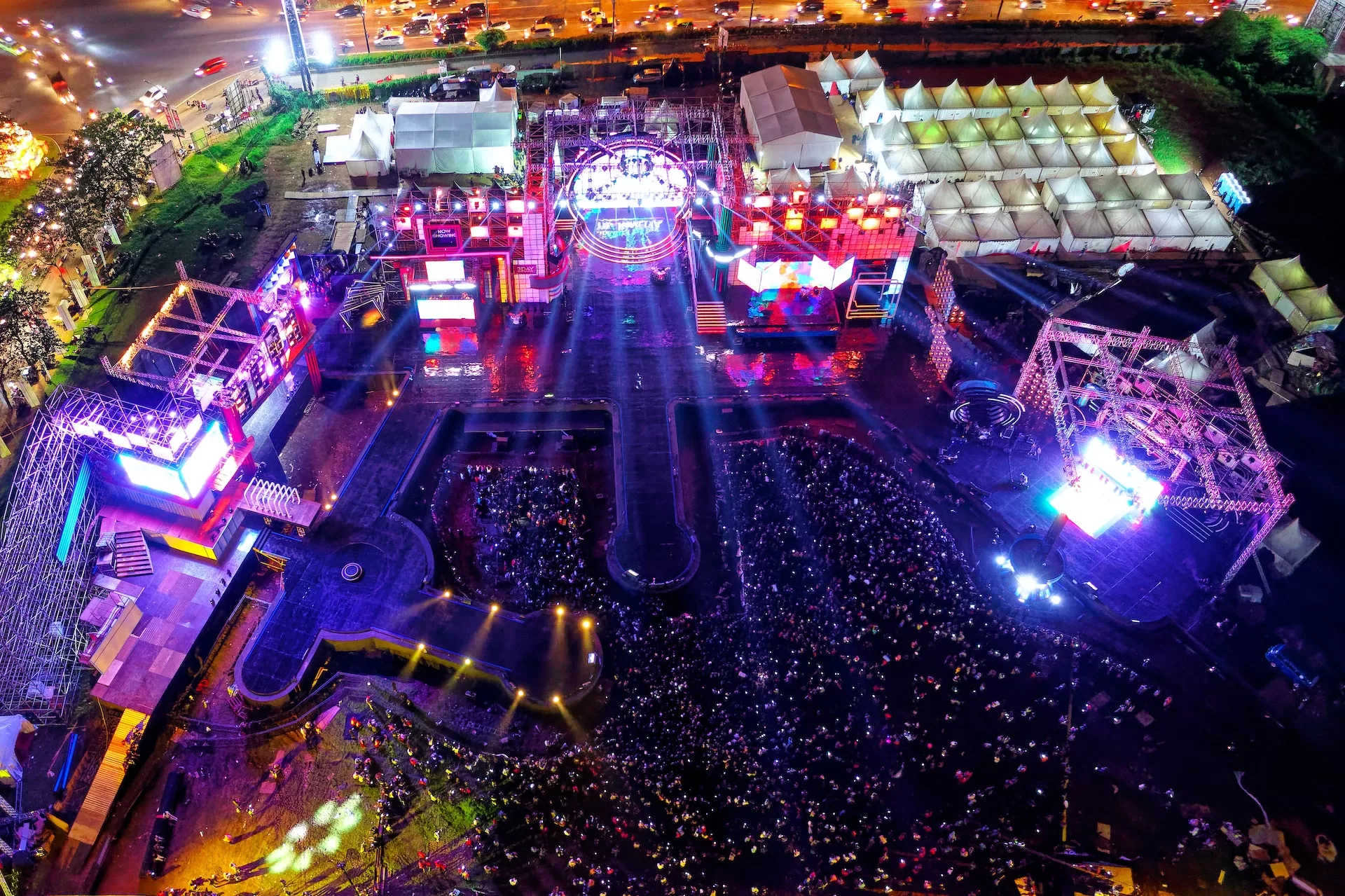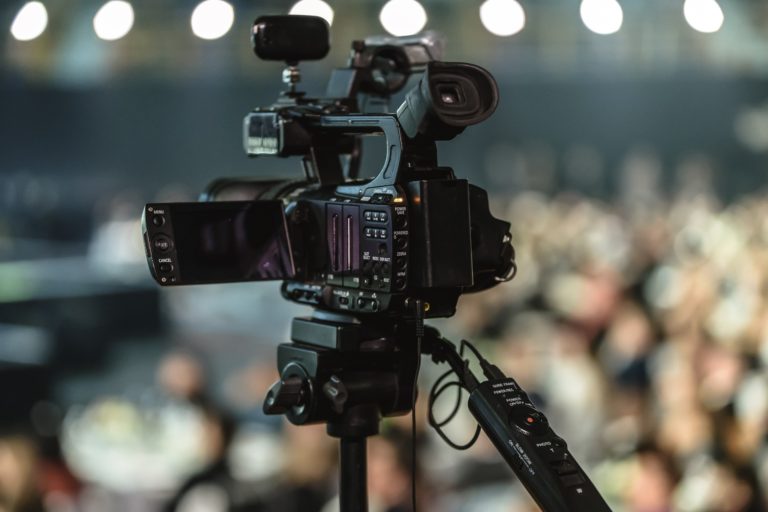How Much Money Bands Make on Tour: The Breakdown
There are always plenty of myths about how much money bands make on tour. If you ask megastars, then they’ll easily say millions. Yet, you might find a different answer from a much smaller act.
The true figures about how much money bands make on tour depend on their schedule, crew, attendance of the show, and the amount of merchandise sold each night.
What may seem like a lucrative part of the industry can be particularly misleading, and amounts will vary from act to act.
The music industry’s costs and potential earnings from touring can vary heavily. So just how much money do bands make on tour, and is it worth all the effort?
4 Ways Bands Make Money While On Tour
Considering the money bands make on tour, it’s about getting bodies in the venue.
The more people attend a show, the more money you make. What gives the band revenue streams are factors such as:
- Promoters rate
- Ticket price
- Attendance
- Merch sales
So let’s see how these can earn bands money when playing on tour, as they are all slightly different in how they bring in money.
1. Flat Promoter Fees
Bands first receive a flat amount for playing a tour or show from the promoter.
This fee will vary depending on the band’s place on the card and the type of event they are playing. For example, headliners of a month-long tour will be paid more than an opening act who appears at only a set number of shows.
Agents and venues will take a small amount of this fee, but most of the money will go directly to the act.
A flat fee guarantees you get something from every show you play. The guarantee often will be a minimum of $500-$800 per show, so bands playing ten shows may receive a flat fee of $5000.
2. Show Guarantees
Guarantees are a deal you can make with the venue to bring in X sales if they cut their cost by Y. If you are an established band, you might get away with this. But for those that are starting, you will need to prove that you can make this mark with your social media presence.
For example, if 8 out of 10 shows sell out, a band might receive an $800 bonus for selling out a set number of venues.
Speaking of social media – if you are signed on with a label, this is an expense that you will not have to cover yourself. Typically, most labels will do all of your promotion and social media marketing for you because this is how they make money off of you. So get them to leverage this as much as they can!
It is easy to see why the term “starving artist” exists with all of this information. The cost to initially go on tour is costly, and there are not a lot of guarantees that you can make money. Many bands will lose money before they start to make money from touring. However, you can make traveling a career with persistence and a keen budgetary eye. ALWAYS make sure you do your research.
These sorts of fees entice bands to hit the road in the first place. And it is how the big bands earn big bucks from sponsors and promoters looking to fill big venues after someone’s profile reaches new heights.
Total minimum income from promoter fees (guarantees and flat payouts): $5000-$8000
3. Ticket Sales & Gate Receipts
The other big income driver is selling the people into the venue itself. And your income from this is easy to work out. The more people at a show, the more money you earn.
Don’t get excited, though, thinking that you are going to 100% of the sales from a sold-out venue. The figure currently sits at around 75-80% of the amount.
After all, promoters, venues, and agents will take their slice of the money before you receive the income from those entering the venue.
So how much might you earn? Well, most average gig venues have a capacity of around 350 people. According to FinanceBuzz, the average price for a ticket sits at $63.54 for shows in the USA. Going by this estimate, a sold-out show would generate a base revenue of $22,239. Removing the fees from agents leaves $16,679 for acts to take.
When dividing these figures amongst the artists playing, a headliner looks to take around 60% of these figures, while support acts may receive 20%.
So going by these figures, headliners would get $10,007 from a sold-out show while two support acts would receive $3335. That is before the money is then split between individual members.
If you play in a four-piece, headlining band members would receive $2,501 per show, and those on the support bill would receive $833 each.
It shows how vital selling out venues is for everyone on the card, regardless if they are a headlining act or first on the support bill.
Total minimum income from sales/show: $800-$2500
4. Merchandise
The other big money generator is by selling merchandise. Merchandising is a big way to boost potential income, mainly if a venue is sold out.
Fans will always want to grab something from a show, and even just having a t-shirt for sale makes a big difference to your worth.
You must know you won’t get all the profits some bands get. Depending on different factors, the venue will look to recoup a decent slice of the sales numbers, which might range from 20-35%.
With that in mind, you need to set prices that are not extortionate but also allow you to recoup what it costs to make them. It’s why most bands set a minimum of $10-$20 for shirts at a stall.
Some merchandising companies will jack prices up higher if they are representing a headliner, and that’s when fees will hit $40-$50 per shirt.
If you can sell shirts to a minimum of 60% of a 350-person venue, you are looking at generally an average minimum of $3,150 in shirt sales per show.
After deducting external fees, you would receive $2,205 to share among band members. This would break down to an average of $551.25 per show for each member of a four-piece band.
It could allow members to earn at least $5510 each if they were to repeat this on a 10-show tour where each show had sold out.
Total minimum income in Merch sales: $5500-22,200
Who Gets The Most Money on Tour? Bands or Everyone Else?
Touring is a relentless beast for any act. However, it’s also a necessity. Playing show after show for weeks on end is a grueling effort, but it is the best way to boost your profile and sales of CDs.
You often see tours touted as the money maker for best-selling artists; to a degree, they aren’t wrong.
According to to live revenue aggregator Pollstar, The Rolling Stones have amassed $2.17bn through touring throughout their career, with U2 having also grossed $2.13bn over past decades.
Surely, musicians should all be touring as much as possible, right? However, that’s not quite the case.
Many major acts who perform at stadiums and arenas will have others funding much of their set. This could be through primary sponsors, promoters, and even record labels.
For bands or musicians touring in a van from town to town, it’s a much different scenario. It’s here where every little item makes a difference to the end figure you receive.
Costs to think about when on tour
When battling profits and losses, everything will impact just what you will make. This all includes:
- Travel & Accommodation
- Schedule
- Overall Attendance
- Third-Party Deals
- Crew
- Merchandising
It’s a lot to take in, but you need to know how each of these may see you finish making a profit or sucking on a loss.
You will find that the only concrete money that comes into your pocket will be whatever the promoter pays you to complete the tour.
From there, everything else is potentially fluid. Your primary sources of income will come from the gate of each show.
The more people who attend, the better chances of making a profit. It’ll also directly drive how much you make from merch sales.
From there, the costs then start to add up. Logistics aren’t cheap, even if you stay at budget hotels and use a second-hand van for riding show to show.
That doesn’t cover paying for those with you on tour. Costs can include paying crew members for technical support and selling merch for you.
Furthermore, there are also third-party costs that may need to be factored in too. Venues often take some share of merch sales and gate receipts as well. This may not be much, but 10% over several weeks soon adds up.
When considering pure travel or rest days, everything runs closer to the break-even point (where revenue equals costs). So is it all worth it?
The 6 Highest Costs of Touring as a Band You Need To Know
Touring is very much part of the industry. It’s what drives sales and boosts star power. However, to make money, you do genuinely have to spend money.
Spending is what it might feel like your band is doing non-stop when on tour. Everything costs, and it’s not cheap to do even a month’s tour in the current climate.
Let’s take some time to break down just what you might be spending on the road.
1. Travel & Accommodation
It would be best if you worked out everything regarding logistics. Even a domestic tour of the US isn’t going to be cheap.
Just in logistics, you will frequently be spending high amounts of money on:
- Fuel
- Accommodation
- Means of transportation
When it comes to transportation, driving is by far the cheapest method. Yet, it doesn’t make it particularly affordable. You would be lucky to hire a van and trailer for anything less than $10000 for the tour.
Then, just fuel will drive your costs even higher. The EIA showed that the cost per gallon has skyrocketed from $1.50 in 2000 to over $5 in the 2020s.
With fuel prices rising at an average annual rate of 4%, it’s a brutal price to pay just from getting from show to show. This would mean that you may spend a minimum of $5,000-$10,000 on a month’s tour in fuel. These fuel costs significantly impact where bands must tour, so their potential earnings are worth the effort.
Then there’s accommodation. You will need to find somewhere to sleep, and you can’t spend every night sleeping in a van. You will find that most cheap hotels will set you back an average of $50 a night per person. That is a minimum of $300-$500 a night for your traveling party. If you set that back over a month-long tour, it’s another $8000 in expenses.
Total Minimum Logistics Cost: approx. $20000-25000
2. Personnel Costs (Staffing)
Another considerable expense will be paying for having any team members with you on tour. This will be an amount that varies depending on your act as a whole.
If you are a solo artist or a band, you might get away with having a manager with you on tour and a roadie to work lights/sound engineering.
The costs will expand even further for acts with an additional crew, such as merch sellers and extra musicians. But everyone still has to be paid for.
Some acts have been straightforward about these costs. Indie pop duo Pomplamoose revealed in 2014 that for their tour, they paid six tour members $8794 for a week on the road. That included four touring musicians and two sound staff. That equated to over $43,000 during that 5-week tour.
While crew costs may be smaller than what Pomplamoose paid for that tour, you will still need to pay the crew what they are worth for tours. That will be $10,000 for two or three crew members over a month.
Total Minimum Crew Costs:$10,000
3. Insurance
You can’t be on tour without being insured when on stage. This covers both yourself or injury and potential incidents with fans on stage.
You never know when a set piece might spontaneously collapse, or a stage dive might go wrong. Most policies can be split into two areas:
- By show
- Annual amount
For those playing intermittently, prices by the event may only hit around $50-$60, but tour-wide policies can stretch into the thousands.
Annual fees can be cheaper; these cover artists year-round regardless of how much they perform. With these policies starting at around $200 per performer, it can work out more affordable for those performing all-year round.
What makes insurance “expensive” is deciding not to pay for it. Getting sued because someone gets injured at your show is a reality.
Total Minimum Insurance Cost: $50-$800
4. Production Cost
Production costs are never going to be cheap. Even though you own all your instruments, you must determine what lighting and sound equipment you may need to rent.
None of this equipment is particularly cheap, especially lighting rigs and other heavy items requiring much power. This, on its own, will likely set you back several thousand to get what you need.
Throw in a couple more thousand for trailers to haul everything along, and you will likely find that production costs will reach a minimum of $5,000-$10,000.
Thankfully, it’s a far cry from what an established tour manager revealed to the English newspaper The Guardian that they spent over $750,000 daily for a significant headlining stadium tour.
Total Minimum Production Cost: $5,000-$10,000
5. Merchandise
Before earning the benefit of merch sales figures, you need to physically create the shirts and hats and make enough of them to sell at the show.
Making merchandise isn’t cheap, and there are plenty of loopholes to negotiate before you can sell it.
You need to think carefully about the average size of your venues and the type of people at those shows. This lets you determine how much you need to create and what kind of items you want to sell.
Production costs will generally start in the hundreds if you sell one t-shirt style for your act, and then it’s just a matter of the quantity.
So if you manufactured one shirt at a base cost of $3, getting 500 for a week’s worth of shows would cost you $150. It would expand to $600 if you did this for a month-long tour.
Should you expand your product line, then that will drive costs higher. For example, creating an embroidered hat would start at $12. The 500 items for a week would cost $6000 to sell alongside a t-shirt.
Thankfully, you can recoup these costs back through sales, but it still needs to be counted up when adding total expenses.
Total Minimum Merchandising Costs: $500-$3000
6. Food
Food is the energy that gives your team the power to rock. Choose whole-grain sources for sustained energy. Nobody shreds like a guitarist fueled by shredded wheat.
In all seriousness, it doesn’t hurt to prioritize healthy and economical foods when you’re on the road. The temptation for gas station junk food is hard to resist, but they don’t provide the best value in terms of nutrition. A sugar crash halfway through a set isn’t ideal.
Non-perishable staples, including canned goods you can warm up in a hotel microwave, are among the most cost-effective foods for road trips. Ultimately, getting most of your food from a grocery store rather than a drive-through will save your band a great deal. Except to spend about $10 a day (give or take) per person this way.
Also, free hotel breakfasts can come in extraordinarily hand
Total Minimum Food Costs: $300
7. Fees That Come Outside of the Tours and Shows
When working out costs, you also need to consider any cuts external parties may take from overall figures. This is something you should consider a general expense.
First, you need to consider who is taking what shares from the potential income you may receive.
These amounts generally won’t change, and figures will be spread between promoters, third-party agents, and the venue. Those figures include:
- Promoters: 10% of gate receipts
- Booking Agents: 5-10% of playing fee, gate receipts
- Venue: 20-30% Merchandise sales, 20% Gate Receipts
With everyone looking to get a slice of the action, it can genuinely affect how much money bands make on tour. And your overall net income will drop as more people become involved.
Merchandise sales are hotly contested, with many venues slowly looking to get an increased share of what is sold in their venues. For example, venues in the UK increased their take to 30% in 2022 as venues themselves looked to find ways to stay profitable.
Consider carefully what you may lose in add-on figures for an entire tour. You may need to be aware of the cut everyone else is looking to take.
Total Minimum Add-On Costs: 20-30% of all incoming figures
How Much Money Bands Make On Tour – Comparing Expenses and Profits With an Example
There are often fine margins when working out how much money bands make on tour. These margins are often dictated by how many people attend a show.
It’s a big risk to take especially considering how much bands have to fork out to go on the road in the first place. As we can see from the following breakdown:
Final Breakdowns
Total Minimum costs:
- Logistics: $20000-25000
- Crew: $10000-$30000
- Insurance: $200-$8000
- Production: $8000-$10000
- Merchandise: $2400-$21000
Minimum Tour Cost: $40,600
To have to spend $40,600 just for a potential four-week tour is a massive amount for any band to commit to. And it’s a commitment with no guarantee of success.
It’s why acts hope that they can sell out shows and try to bring in as much money as possible. A successful tour can be profitable, though, as our breakdown shows.
Minimum Income (headlining act):
- Promoter Fees: $5000-$8000
- Ticket Sales: $25000
- Merchandise: $22,000
Total Income: $52,000
For a headlining act, an income of $52,000 from a tour means the band just about comes out profitable, posting a margin of $11,600. Each band member would walk away with $13,000 from a tour.
By this estimate, bands must repeat that cycle for several months to earn a decent annual salary.
With the US Bureau of Statistics averaging the annual average salary at $54,132, bands would need to tour for four months a year for each member to hit that milestone.
That is still dependent on the shows being completely sold out. If attendances are only half or 75% full, bands risk being left in the red.
It’s why touring is not quite as glamorous as it might seem, and a lot of hard work is required to showcase just how much money bands make on tour and make it a successful venture.





![How to Remix a Song Legally [Copyright Considerations]](https://www.bythebarricade.com/wp-content/uploads/2023/04/150254623_l-1024x576-1-768x432.jpg)


